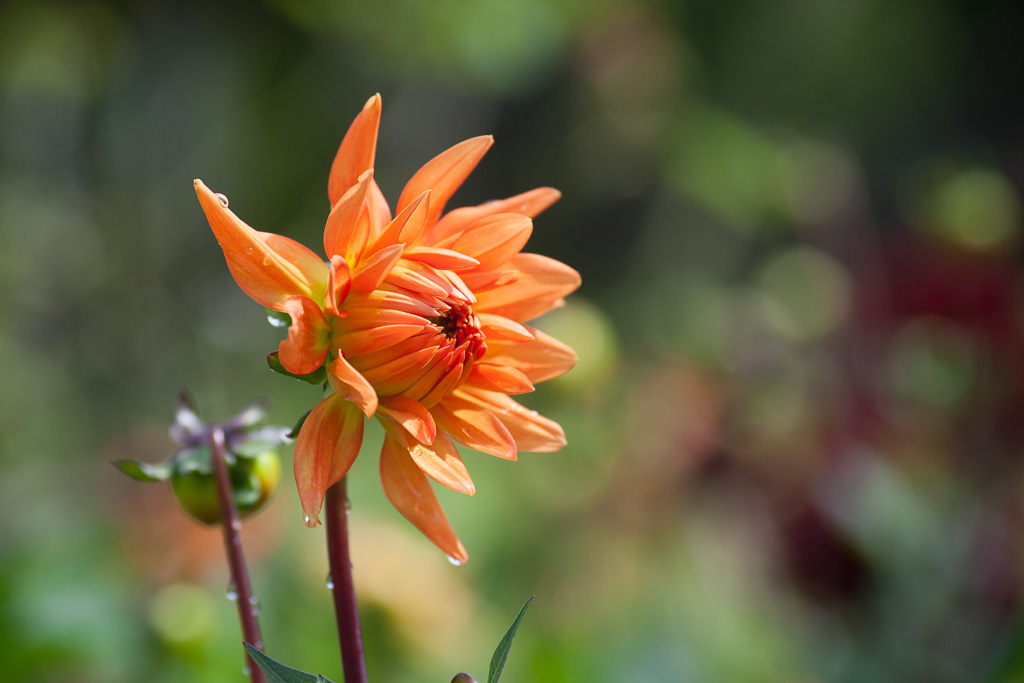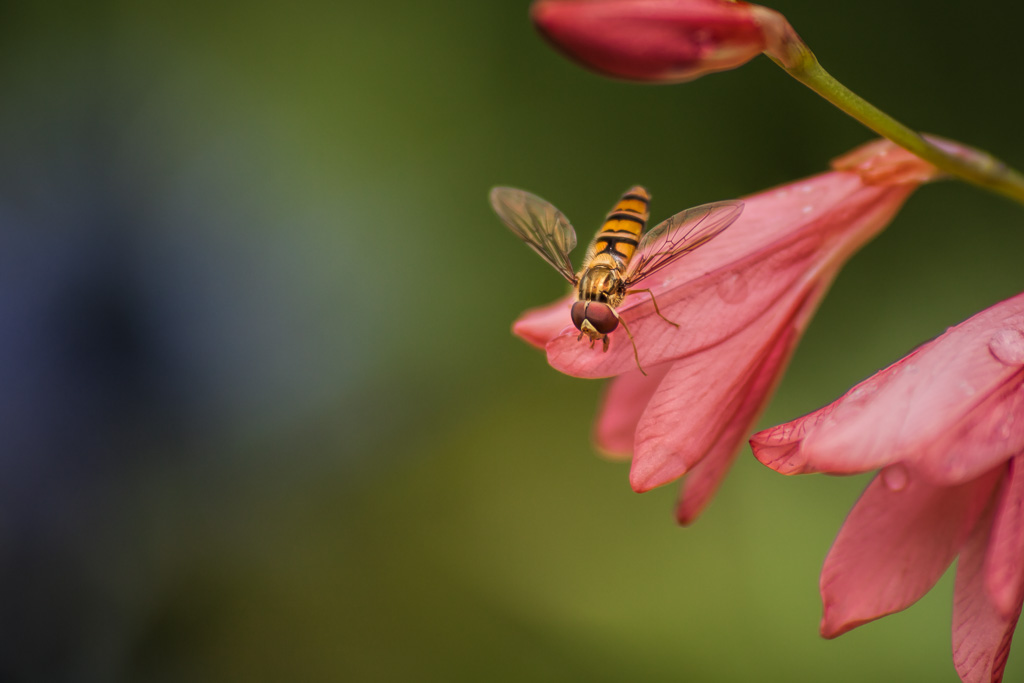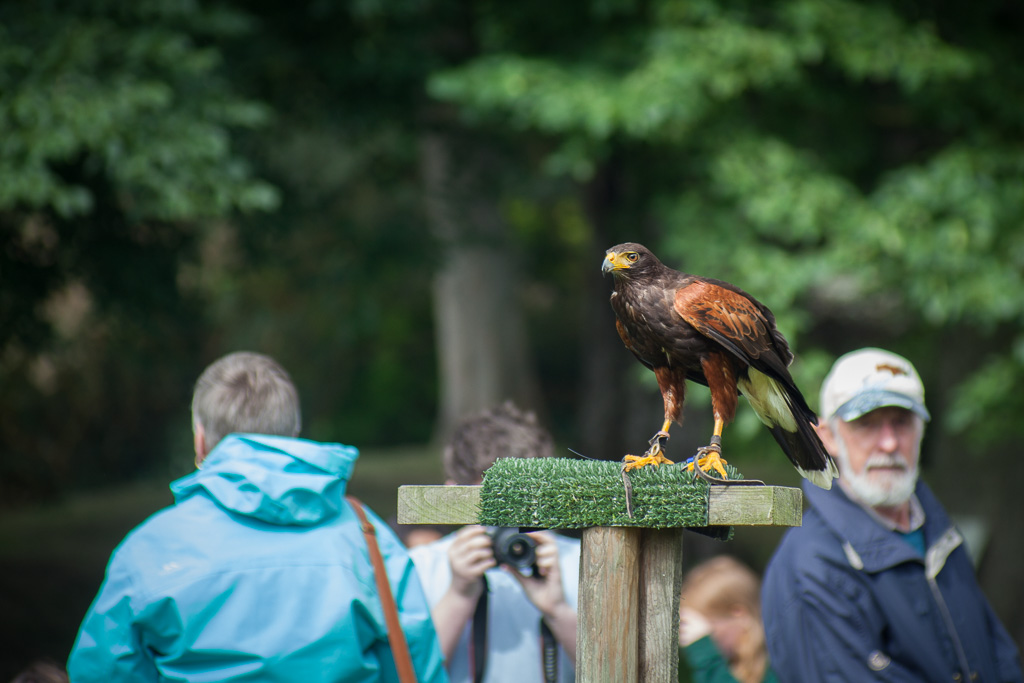| View previous topic :: View next topic |
| Author |
Message |
SonicScot


Joined: 01 Dec 2011
Posts: 2697
Location: Scottish Highlands
|
 Posted: Sat Aug 16, 2014 5:55 am Post subject: Vivitar Series 1 90-180mm f4.5 Flat Field Macro Posted: Sat Aug 16, 2014 5:55 am Post subject: Vivitar Series 1 90-180mm f4.5 Flat Field Macro |
 |
|
SonicScot wrote:
The latest addition to my Series 1 family, typically solid construction and smooth operation. It's a hefty bugger too!
I'll share a mixed bunch of shots from my first outing with it, just to demonstrate some of its character.
Canon 5D Mkll, all at ISO400, various apertures.
When I got the focus just right it proved to be shockingly sharp.
This Series 1 lens has the least amount of CA out of all the ones I've tried, none at all on most shots. That was a pleasant surprise.







I'm really pleased with it so far but I need to learn how to 'drive' it properly before I can get the best from it. It's bit quirky to use.
_________________
Gary
Currently active gear....
Sony a7
E-M1 Mkll
Rubinar 1000/10 + 2x matched extender
Tamron 500/8 55BB
Sigma 100-300/4
Vivitar Series 1.... 200/3, 70-210/3.5 (V1 by Kiron), 135/2.3, 105/2.5 macro, 90/2.5 macro (Bokina), 90-180/4.5 Flat Field Macro, 28-90mm f/2.8-3.5
Carl Zeiss.... 180/2.8, 135/3.5, 85/1.4, 35/2.4 Flektagon, 21/2.8 Distagon
Nikon.... 55/3.5 micro, 50/1.2
Elicar 90/2.5 V-HQ Macro
Zhongyi Speedmaster 85/1.2
Jupiter-9 85/2
Helios.... 58/2 44-3
Hartblei 45/3.5 Super-Rotator TS-PC
Zenitar 16/2.8 fisheye
Samyang 8/3.5 fisheye
Nodal Ninja 4, Neewer leveling tripod base
Flickr http://www.flickr.com/photos/gazsus/ Website http://garianphotography.co.uk/ |
|
| Back to top |
|
 |
bernhardas

Joined: 01 Jan 2013
Posts: 1432
Expire: 2017-05-23
|
 Posted: Sat Aug 16, 2014 6:49 am Post subject: Posted: Sat Aug 16, 2014 6:49 am Post subject: |
 |
|
bernhardas wrote:
Edited
Last edited by bernhardas on Mon Jul 25, 2016 7:16 am; edited 1 time in total |
|
| Back to top |
|
 |
Mark

Joined: 01 Dec 2012
Posts: 251
Location: Budapest, Hungary
|
 Posted: Sat Aug 16, 2014 7:09 am Post subject: Posted: Sat Aug 16, 2014 7:09 am Post subject: |
 |
|
Mark wrote:
Bokeh seems to be a bit busy sometimes. I like the bird shots, especially the first one.
_________________
Latest post on my blog (no new posts):
http://lightbeam-photography.blogspot.hu/2013/10/sword-lilies.html |
|
| Back to top |
|
 |
SonicScot


Joined: 01 Dec 2011
Posts: 2697
Location: Scottish Highlands
|
 Posted: Sat Aug 16, 2014 7:11 am Post subject: Posted: Sat Aug 16, 2014 7:11 am Post subject: |
 |
|
SonicScot wrote:
| bernhardas wrote: |
nice pictures.
I also have a love hate relationship with it. Can be astounding when spot on. bit a difficult beast.
P.S. number 5 is my favorite, natural shot with beautiful fall off of sharpness. |
Thank you 
I've only taken it out a couple of times and yeah, it's a difficult lens to use. It's definitely worth persevering though.
No5 was a surprise, that bird hopped towards me from out of nowhere, he came very close before stopping to pose for a minute. I too love the fall off 
_________________
Gary
Currently active gear....
Sony a7
E-M1 Mkll
Rubinar 1000/10 + 2x matched extender
Tamron 500/8 55BB
Sigma 100-300/4
Vivitar Series 1.... 200/3, 70-210/3.5 (V1 by Kiron), 135/2.3, 105/2.5 macro, 90/2.5 macro (Bokina), 90-180/4.5 Flat Field Macro, 28-90mm f/2.8-3.5
Carl Zeiss.... 180/2.8, 135/3.5, 85/1.4, 35/2.4 Flektagon, 21/2.8 Distagon
Nikon.... 55/3.5 micro, 50/1.2
Elicar 90/2.5 V-HQ Macro
Zhongyi Speedmaster 85/1.2
Jupiter-9 85/2
Helios.... 58/2 44-3
Hartblei 45/3.5 Super-Rotator TS-PC
Zenitar 16/2.8 fisheye
Samyang 8/3.5 fisheye
Nodal Ninja 4, Neewer leveling tripod base
Flickr http://www.flickr.com/photos/gazsus/ Website http://garianphotography.co.uk/ |
|
| Back to top |
|
 |
SonicScot


Joined: 01 Dec 2011
Posts: 2697
Location: Scottish Highlands
|
 Posted: Sat Aug 16, 2014 7:13 am Post subject: Posted: Sat Aug 16, 2014 7:13 am Post subject: |
 |
|
SonicScot wrote:
| Mark wrote: |
| Bokeh seems to be a bit busy sometimes. I like the bird shots, especially the first one. |
I agree, the bokeh isn't as smooth as the rest of the Series 1 family.
Glad you like the bird shots 
_________________
Gary
Currently active gear....
Sony a7
E-M1 Mkll
Rubinar 1000/10 + 2x matched extender
Tamron 500/8 55BB
Sigma 100-300/4
Vivitar Series 1.... 200/3, 70-210/3.5 (V1 by Kiron), 135/2.3, 105/2.5 macro, 90/2.5 macro (Bokina), 90-180/4.5 Flat Field Macro, 28-90mm f/2.8-3.5
Carl Zeiss.... 180/2.8, 135/3.5, 85/1.4, 35/2.4 Flektagon, 21/2.8 Distagon
Nikon.... 55/3.5 micro, 50/1.2
Elicar 90/2.5 V-HQ Macro
Zhongyi Speedmaster 85/1.2
Jupiter-9 85/2
Helios.... 58/2 44-3
Hartblei 45/3.5 Super-Rotator TS-PC
Zenitar 16/2.8 fisheye
Samyang 8/3.5 fisheye
Nodal Ninja 4, Neewer leveling tripod base
Flickr http://www.flickr.com/photos/gazsus/ Website http://garianphotography.co.uk/ |
|
| Back to top |
|
 |
Lloydy


Joined: 02 Sep 2009
Posts: 7794
Location: Ironbridge. UK.
Expire: 2022-01-01
|
 Posted: Sat Aug 16, 2014 9:02 am Post subject: Posted: Sat Aug 16, 2014 9:02 am Post subject: |
 |
|
Lloydy wrote:
Impressive results, that's a useful range as well.
_________________
LENSES & CAMERAS FOR SALE.....
I have loads of stuff that I have to get rid of, if you see me commenting about something I have got and you want one, ask me.
My Flickr https://www.flickr.com/photos/mudplugga/
My ipernity -
http://www.ipernity.com/home/294337 |
|
| Back to top |
|
 |
kryss


Joined: 13 Sep 2009
Posts: 2169
Location: Canada
Expire: 2017-09-18
|
 Posted: Sat Aug 16, 2014 12:15 pm Post subject: Posted: Sat Aug 16, 2014 12:15 pm Post subject: |
 |
|
kryss wrote:
Excellent....well done.
_________________
Do not trust Atoms....they make up everything. |
|
| Back to top |
|
 |
eno789

Joined: 27 Aug 2010
Posts: 159
Location: California
|
 Posted: Sat Aug 16, 2014 3:37 pm Post subject: Posted: Sat Aug 16, 2014 3:37 pm Post subject: |
 |
|
eno789 wrote:
All great shots! Thanks for sharing.
At far distance, bokeh is not the best. This is probably because of the relative slow aperture and 6-blade.
But the bokeh really shines at close distance. Some California Wildflowers taken earlier this year with the same lens on NEX 5N:
Western Hounds Tongue




Blue Eyed Grass

_________________
Sharpness from lenses; Softness from me.
Nikon DSLR, Sony Mirrorless, Panasonic mu-4/3 - Having fun with MF lenses
https://www.flickr.com/groups/painterly_bokeh |
|
| Back to top |
|
 |
Mike Deep


Joined: 25 Oct 2008
Posts: 323
Location: Upstate New York
|
 Posted: Sat Aug 16, 2014 7:32 pm Post subject: Posted: Sat Aug 16, 2014 7:32 pm Post subject: |
 |
|
Mike Deep wrote:
What's the working distance like at max magnification?
_________________
Rocket Launch Photography
Olympus: 24/2.8 MC, 28/3.5, 28/2.8 MC, 35/2.8, 50/3.5, 50/1.8 MC, 50/1.4 MC, 35-70/3.6, 75-150/4
Nikon: C 24/2.8, AI-S 28/2.8, K 35/2, K 35/2.8, F 55/3.5, C 55/1.2, AI 85/2, 105/2.5 (5/3), 105/2.5 (5/4), F 135/2.8, F 200/4, No. 5T
Pentax: 28/3.5, 35/3.5, 50/1.4 (8/6), 50/1.4 (7/6), M 50/1.4, SMC 55/1.8, 105/2.8, SMC 135/3.5, 150/4
Tamron: SP 17/3.5 151B, 28/2.5, 135/2.8 T-135, SP 300/2.8 60B, SP 35-80/2.8-3.8 01A, 80-210/3.8-4 103A, SP 1.4x TC 140F, SP 2x TC 01F
Vivitar: 24/2 (Kino), 28/2 (Kino), 50/1.4 (Cosina), S1 90/2.5 (Tokina), S1 28-80/2.8-3.5 (Kino), 70-150/3.8 (Kino), S1 70-210/3.5 (Kino), 2x Macro TC
Etc: Yashica 3.5cm/2.8, Fujinon 50/1.4, Yashica ML 50/1.4, Tomioka Yashinon 55/1.2, Mamiya/Sekor 55/1.7, Sigma 90/2.8
That's a lot of 50s. |
|
| Back to top |
|
 |
eno789

Joined: 27 Aug 2010
Posts: 159
Location: California
|
 Posted: Sat Aug 16, 2014 8:00 pm Post subject: Posted: Sat Aug 16, 2014 8:00 pm Post subject: |
 |
|
eno789 wrote:
0.7m MFD |
|
| Back to top |
|
 |
kenetik


Joined: 02 Mar 2014
Posts: 521
|
 Posted: Sat Aug 16, 2014 10:54 pm Post subject: Posted: Sat Aug 16, 2014 10:54 pm Post subject: |
 |
|
kenetik wrote:
Those samples look very nice. Would love to have one of these, they're not very common and pretty pricey though.
_________________
________________________________________________________
I buy lots of lenses and sometimes I even use them... |
|
| Back to top |
|
 |
Attila


Joined: 24 Feb 2007
Posts: 57865
Location: Hungary
Expire: 2025-11-18
|
 Posted: Sat Aug 16, 2014 11:48 pm Post subject: Posted: Sat Aug 16, 2014 11:48 pm Post subject: |
 |
|
Attila wrote:
Famous lens I think older than Series 1 made by different maker, I had twice . Beautiful birds!!
_________________
-------------------------------
Items on sale on Ebay
Sony NEX-7 Carl Zeiss Planar 85mm f1.4, Minolta MD 35mm f1.8, Konica 135mm f2.5, Minolta MD 50mm f1.2, Minolta MD 250mm f5.6, Carl Zeiss Sonnar 180mm f2.8
|
|
| Back to top |
|
 |
hifisapi


Joined: 25 Sep 2012
Posts: 941
Location: USA
|
 Posted: Sun Aug 17, 2014 10:18 am Post subject: Posted: Sun Aug 17, 2014 10:18 am Post subject: |
 |
|
hifisapi wrote:
I've heard a lot about this lens but have never seen one for sale on ebay in Pentax K mount.
_________________
===========
ACQUIRED OVER 30 YEARS:
Cameras: DSLR=Pentax istDS FILM=Pentax SP, SP-F, ESII, SP1000, KX, K2
Lenses : Pentax M42 = Super Multi Coated Takumars 50/1.4 55/1.8 100/4-BELLOWS 500/4.5 1000/8 135-600/6.7 Pentax PK= SMC Pentax-Ks K17/4-FF Fisheye K18/3.5 K20/4 K24/3.5 K28/3.5 K28/2 K35/3.5 K35/2 K50/1.2 K50/1.4K 50/4-MACROK 55/1.8 K85/1.8 K100/4-MACRO K100/4-BELLOWS K105/2.8 K120/2.8 K135/3.5 K135/2.5 K150/4 K200/4 K400/5.6 K45-125/4K 85-210/4.5 Pentax PKM = SMC Pentax-M M40/2.8-Pancake M50/1.4 M75-150/4 M80-200/4.5 Pentax PKA= SMC Pentax-A A15/3.5 A50/2.8-MACRO A28/2 A35/2 A50/1.4 A135/2.8 A200/4 A*300/4 A35-105/3.5 A24-50/4 A70-210/4 TAMRON AD2= SP80-200/2.8 SP180/2.5 TOKINA AT-X PK= ATX28-85/3.5-4.5 ATX35-70/2.8 ATX60-120/2.8 ATX80-200/2.8 ATX100-300/4 ATX90/2.5 MACRO KIRON-LESTER DINE PK = 105/2.8-MACRO VIVITAR PK = 135/2.8-MACRO 28-85/4 NOFLEXAR AUTOBELLOWS PK = 60/4 105/4 |
|
| Back to top |
|
 |
Gerald


Joined: 25 Mar 2014
Posts: 1196
Location: Brazil
|
 Posted: Sun Aug 17, 2014 1:06 pm Post subject: Posted: Sun Aug 17, 2014 1:06 pm Post subject: |
 |
|
Gerald wrote:
The F4.5 lens Vivitar 90-180mm Flat Field Macro is a lens that was designed for medical use. It is a specialized lens to be used on a tripod for macro photography of static objects. As a lens for general use, it is not a good substitute for a 135mm F2.8 or 200mm F4.
_________________
If raindrops were perfect lenses, the rainbow did not exist. |
|
| Back to top |
|
 |
eno789

Joined: 27 Aug 2010
Posts: 159
Location: California
|
 Posted: Sun Aug 17, 2014 5:34 pm Post subject: Posted: Sun Aug 17, 2014 5:34 pm Post subject: |
 |
|
eno789 wrote:
AFAIK, this is one of the only two true macro (flat field) ZOOM lenses, the other being the Nikon AF-D 70-180mm f4.5-5.6.
By definition, any macro lens is special lens, cannot substitute fast prime lens for a lot of general use. But, the fact that it's macro zoom makes it very convenient in the field. OP's excellent shots show case that it can be used for both mid-distance and macro usage, which 135mm or 200mm prime lenses cannot easily do.
_________________
Sharpness from lenses; Softness from me.
Nikon DSLR, Sony Mirrorless, Panasonic mu-4/3 - Having fun with MF lenses
https://www.flickr.com/groups/painterly_bokeh |
|
| Back to top |
|
 |
bernhardas

Joined: 01 Jan 2013
Posts: 1432
Expire: 2017-05-23
|
 Posted: Sun Aug 17, 2014 5:47 pm Post subject: Posted: Sun Aug 17, 2014 5:47 pm Post subject: |
 |
|
bernhardas wrote:
[Edited
Last edited by bernhardas on Mon Jul 25, 2016 7:17 am; edited 1 time in total |
|
| Back to top |
|
 |
Gerald


Joined: 25 Mar 2014
Posts: 1196
Location: Brazil
|
 Posted: Sun Aug 17, 2014 6:11 pm Post subject: Posted: Sun Aug 17, 2014 6:11 pm Post subject: |
 |
|
Gerald wrote:
| bernhardas wrote: |
| Gerald wrote: |
| The F4.5 lens Vivitar 90-180mm Flat Field Macro is a lens that was designed for medical use. It is a specialized lens to be used on a tripod for macro photography of static objects. As a lens for general use, it is not a good substitute for a 135mm F2.8 or 200mm F4. |
Why? |
Because the Vivitar 90-180mm F4.5 is large, heavy and slow, especially when compared to a 90mm or 135mm F2.8, which are more than one stop faster with 1/2 or 1/3 the weight, and can be bought for 1/5 to 1/2 the price.
_________________
If raindrops were perfect lenses, the rainbow did not exist. |
|
| Back to top |
|
 |
eno789

Joined: 27 Aug 2010
Posts: 159
Location: California
|
 Posted: Sun Aug 17, 2014 6:37 pm Post subject: Posted: Sun Aug 17, 2014 6:37 pm Post subject: |
 |
|
eno789 wrote:
| Gerald wrote: |
| bernhardas wrote: |
| Gerald wrote: |
| The F4.5 lens Vivitar 90-180mm Flat Field Macro is a lens that was designed for medical use. It is a specialized lens to be used on a tripod for macro photography of static objects. As a lens for general use, it is not a good substitute for a 135mm F2.8 or 200mm F4. |
Why? |
Because the Vivitar 90-180mm F4.5 is large, heavy and slow, especially when compared to a 90mm or 135mm F2.8, which are more than one stop faster with 1/2 or 1/3 the weight, and can be bought for 1/5 to 1/2 the price. |
To be fair, you'll need a 90mm, a 135mm, and a 180mm or 200mm, to replace in terms of focal length, you still won't have continuous range of focal length. Add an extension tube or two to be able to get good magnification, but you still won't have a continuous range of focus distance and magnification.
In the end, it makes no sense to play the substitution game. Different people have different preferences, and different lenses have different trade-offs.
_________________
Sharpness from lenses; Softness from me.
Nikon DSLR, Sony Mirrorless, Panasonic mu-4/3 - Having fun with MF lenses
https://www.flickr.com/groups/painterly_bokeh |
|
| Back to top |
|
 |
Gerald


Joined: 25 Mar 2014
Posts: 1196
Location: Brazil
|
 Posted: Sun Aug 17, 2014 6:53 pm Post subject: Posted: Sun Aug 17, 2014 6:53 pm Post subject: |
 |
|
Gerald wrote:
You can do fantastic macrophotography with a good general-purpose zoom lens plus just one achromatic close-up lens:
original:
http://www.marcocavina.com/articoli_fotografici/Achromatic_close-up_lens/00_pag.htm
translation:
http://translate.google.com.br/translate?hl=pt-BR&sl=it&tl=en&u=http://www.marcocavina.com/articoli_fotografici/Achromatic_close-up_lens/00_pag.htm&sandbox=0&usg=ALkJrhgfhXvSqSBWL5aynUtcUBRIhBO8Nw
This solution is practical, technically sound and relatively cheap.
_________________
If raindrops were perfect lenses, the rainbow did not exist. |
|
| Back to top |
|
 |
eno789

Joined: 27 Aug 2010
Posts: 159
Location: California
|
 Posted: Sun Aug 17, 2014 8:10 pm Post subject: Posted: Sun Aug 17, 2014 8:10 pm Post subject: |
 |
|
eno789 wrote:
I have that sigma achromatic, and used it to good result with some of my 70-150mm lenses (about 450g). If you read the article, the performance at the long end deteriorates with that combination.
Also, the Nikon AI 80-200mm/4.5 is 750g (older version 830g) vs 1090g of the Vivitar. But the Nikon zoom does NOT have a built-in tripod collar. Which is a BIG difference for macro/close-up range. I can use the Vivitar on a monopod in the field on a NEX, and still comfortably get the benefit of a true macro zoom.
It's not that expensive either, I got mine in EX+ condition for $150 late last year. The result is not bad even if you just use it as a 180mm f/4.5 1:2 macro lens.
I don't understand why you need to be so negative on this lens. I'd be very happy to see you share good result with other combo, but preferably in separate thread.
_________________
Sharpness from lenses; Softness from me.
Nikon DSLR, Sony Mirrorless, Panasonic mu-4/3 - Having fun with MF lenses
https://www.flickr.com/groups/painterly_bokeh |
|
| Back to top |
|
 |
kenetik


Joined: 02 Mar 2014
Posts: 521
|
 Posted: Sun Aug 17, 2014 9:11 pm Post subject: Posted: Sun Aug 17, 2014 9:11 pm Post subject: |
 |
|
kenetik wrote:
| Gerald wrote: |
You can do fantastic macrophotography with a good general-purpose zoom lens plus just one achromatic close-up lens:
This solution is practical, technically sound and relatively cheap. |
If this were a group of people concerned only with practicality, we wouldn't own so many lenses, wouldn't be using things like enlarger lenses for general purpose photography and probably wouldn't be posting here at all.
I think the samples SonicScot posted here are pretty stunning and I like the bird shots as much or more than the ones he posted using the Vivitar 135/2.3 (which I was blown away by when he posted them). He is an exceptionally talented photographer, but what I took from this thread was that in the right hands, this "specialized and relatively slow" lens can produce amazing shots, and it is a zoom in a very useful range AND a macro!.
_________________
________________________________________________________
I buy lots of lenses and sometimes I even use them... |
|
| Back to top |
|
 |
Gerald


Joined: 25 Mar 2014
Posts: 1196
Location: Brazil
|
 Posted: Sun Aug 17, 2014 9:57 pm Post subject: Posted: Sun Aug 17, 2014 9:57 pm Post subject: |
 |
|
Gerald wrote:
| eno789 wrote: |
If you read the article, the performance at the long end deteriorates with that combination. |
The performance worsened somewhat in the tele end because of the limitations of the zoom lens. Nearly all telephoto zooms lose performance in the tele end. Notice also that Marco Cavina compared the Nikon zoom plus the achromatic close-up lens with a true macro lens of fixed focal length, which usually has exceptional performance. If Marco Cavina had used the achromatic close-up lens in conjunction with a general-purpose prime lens, probably the performance would be as good as of the macro lens. Leica always promoted the use of Elpro lens together with primes because Leica knows that this solution is excellent.
| eno789 wrote: |
Also, the Nikon AI 80-200mm/4.5 is 750g (older version 830g) vs 1090g of the Vivitar. But the Nikon zoom does NOT have a built-in tripod collar. Which is a BIG difference for macro/close-up range. I can use the Vivitar on a monopod in the field on a NEX, and still comfortably get the benefit of a true macro zoom.
|
Marco Cavina used a Nikon 80-200mm F4 zoom lens, but the idea can be applied to any other lens with a tripod ring.
| eno789 wrote: |
I don't understand why you need to be so negative on this lens.
|
I was not being negative towards the Vivitar 90-180mm F4.5 lens. I was just trying to analyze why some people in this same thread mentioned difficulties to use that lens. I think the Vivitar 90-180mm is an excellent lens in its original proposal, but like all Series 1 lenses it become a cult and got a little too expensive.
For macro photography in the field, I think there are very good alternatives. For those who already have a Vivitar 90-180mm and know how to work efficiently with it, I can only say: enjoy it! You have a very good lens!
| kenetik wrote: |
| I think the samples SonicScot posted here are pretty stunning and I like the bird shots as much or more than the ones he posted using the Vivitar 135/2.3 (which I was blown away by when he posted them). He is an exceptionally talented photographer, but what I took from this thread was that in the right hands, this "specialized and relatively slow" lens can produce amazing shots, and it is a zoom in a very useful range AND a macro!. |
I agree totally with you!
_________________
If raindrops were perfect lenses, the rainbow did not exist. |
|
| Back to top |
|
 |
Tedat


Joined: 08 Nov 2011
Posts: 800
Location: Berlin/Germany
|
 Posted: Mon Aug 18, 2014 8:14 am Post subject: Posted: Mon Aug 18, 2014 8:14 am Post subject: |
 |
|
Tedat wrote:
| eno789 wrote: |
| I'd be very happy to see you share good result with other combo |
this won't happen
_________________
Regards
Jan
flickr
Sony A7RM2
Contax T*: Distagon 4/18, Distagon 2/28, Distagon 1.4/35, PC-Distagon 2.8/35, Planar 1.4/50, Planar 1.4/85, Planar 2/100, Planar 2/135, S-Planar 2.8/60, Tessar 2.8/45, Mirotar 8/500, Vario Sonnar 3.4/35-70, Vario Sonnar 4.5-5.6/100-300
Carl Zeiss for Rollei QBM: F-Distagon 2.8/16 HFT, Distagon 2.8/25, Planar 1.4/50 HFT, Sonnar 2.8/85
Konica Hexanon AR: 2.8/21, 1.2/57
Other: Minolta F2.8 [T4.5] 135mm STF, Meopta Meostigmat 1.4/70, Tokina AT-X 2.5/90.. and lots of early M42 Yashinon, Rikenon and Mamiya lenses |
|
| Back to top |
|
 |
texsport

Joined: 12 Feb 2013
Posts: 53
|
 Posted: Mon Aug 18, 2014 3:49 pm Post subject: Posted: Mon Aug 18, 2014 3:49 pm Post subject: |
 |
|
texsport wrote:
| Gerald wrote: |
| The F4.5 lens Vivitar 90-180mm Flat Field Macro is a lens that was designed for medical use. It is a specialized lens to be used on a tripod for macro photography of static objects. As a lens for general use, it is not a good substitute for a 135mm F2.8 or 200mm F4. |
However, on m43, as a walking around macro, it's pretty unusual.
I have several other Series1 macros -90, 70-210- but the 90-180 is the fastest in use for difficult subjects, like insects which don't often hold still for long, or if you approach too close.
It's a specialized lens, but has a place in my compact stuff, on-the-go bag.( Olympus 28-90/Vivitar 90-180/ Noritar 250 with a FF camera, adapters, a m43 camera, an XPan, a Widelux 7, and Bessa L 15/4.5)
Texsport
Last edited by texsport on Tue Aug 19, 2014 4:36 pm; edited 2 times in total |
|
| Back to top |
|
 |
Gerald


Joined: 25 Mar 2014
Posts: 1196
Location: Brazil
|
 Posted: Mon Aug 18, 2014 8:04 pm Post subject: Posted: Mon Aug 18, 2014 8:04 pm Post subject: |
 |
|
Gerald wrote:
| Tedat wrote: |
| eno789 wrote: |
| I'd be very happy to see you share good result with other combo |
this won't happen |

Response here: http://forum.mflenses.com/viewtopic,p,1402634.html#1402634
_________________
If raindrops were perfect lenses, the rainbow did not exist.
Last edited by Gerald on Mon Aug 18, 2014 9:10 pm; edited 1 time in total |
|
| Back to top |
|
 |
|
|
